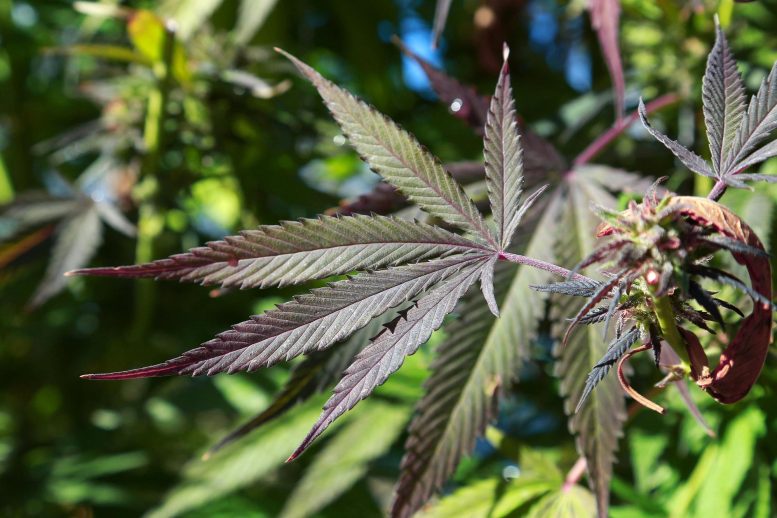
According to new research, marijuana use among young minority men is powerfully impacted by social fabrics of their neighborhoods, including friendships and ideas about masculinity.
According to a new Yale School of Public Health study, the social fabrics of their neighborhoods, including friendships and ideas about masculinity, have a powerful impact on marijuana use among young minority men.
The research led by Tamara Taggart, Ph.D., MPH, a postdoctoral fellow at Yale’s Center for Interdisciplinary Research on AIDS, discovered that strong social bonds between men may increase, rather than decrease, marijuana use, contrary to what was previously thought, and that men who believe in more traditional masculine gender roles—like men are supposed to be strong, successful, and not complain or show worry—are more likely to turn away from marijuana. These findings are published in American Journal on Men’s Health.
While marijuana use among adolescents in low-income neighborhoods has been widely studied, Taggart’s study breaks new ground in the examination of minority men in emerging adulthood, a period between the ages of 18 and 25, in between adolescence and adulthood. Marijuana is the most commonly used illegal drug in the United States. While marijuana use is prevalent among emerging adults of all genders and races, Black and Latino emerging adults who use marijuana are more likely to experience the drug’s negative consequences, such as incarceration, interpersonal violence, injury, and dependence, as compared to their White peers.
Taggart’s study takes one step further than previous studies that determined that living in a disadvantaged neighborhood leads to escalated rates of marijuana use. She looks at two crucial characteristics to determine a neighborhood’s impact on health: neighborhood problems, which can describe a variety of indicators of distress, such as abandoned buildings, litter, violence, and crime, that are known to cause daily stress that can hinder health and well-being; and social cohesion, defined by strong interpersonal bonds, shared values, and a lack of conflict between individuals and groups within a neighborhood, which can foster positive health outcomes. Taggart found, consistent with previous studies, there was a positive association between neighborhood problems and marijuana use.
“This result suggests that neighborhoods can be a source of stress that may influence men to cope through using substances,” said Taggart.
There was also a positive association with social cohesion, previously thought to be a deterrent to substance use. This could be attributed, according to the paper, to social norms that are more permissive of marijuana use, and strong social bonds between those that use marijuana.
Taggart used data from the Cell Phone Research to Enhance Wellness (CREW) study, a study on social networks, cellular phones, and health behavior led by Yale School of Public Health Professor Trace Kershaw, and senior author on the paper. The study interviewed 119 racial/ethnic minority emerging adult men from New Haven, CT.
As not all young men in disadvantaged neighborhoods use marijuana, it becomes necessary, the paper points out, to examine other factors that may deter them, and to get a better understanding of how neighborhood environments can impact substance use. Taggart turns to masculinity as a further determinant of health behavior.
“These findings underscore the importance of understanding social cohesion and neighborhood contexts when trying to reduce the impact of substance use. Our findings imply that more socially connected men may view marijuana use as a way to enact their masculinity and establish a stable identity,” said Taggart. Future research in this area, the paper asserts, may want to deepen understanding of the role of these bonds in men’s substance use behaviors, and possible interventions should aim at reducing neighborhood problems overall through multilevel community-based interventions.
Reference: “Neighborhood Contexts and Marijuana Use Among Urban Dwelling Emerging Adult Men” by Tamara Taggart, Andre L. Brown and Trace Kershaw, 1 February 2018, American Journal of Men’s Health.
DOI: 10.1177/1557988317753222









This is if you think smoking marijuana is a harmful thing. The fact that it is still federally considered a scheduling one drug and that law enforcement overly concentrated on minority neighbourhoods is the real problem. 10 percent of criminals are locked up for marijuana related crimes which is absurd. Portugal has done the right thing with legalisation of drugs. Solves a lot of problems this.
i do not think that smoking marijuana is harmful or dangerous. It should be legal everywhere. Thank goodness, here in California I can obtain it legally in many forms. It is time for some sanity regarding this miracle plant.